Endress Hauser Level Transmitters: Types and operation principle
03.07.2022
The need to measure the level of liquid and other occurrences in various containers arises not only in production, but also in domestic conditions. For the purposes of the application, special devices are consumed - Endress and Hauser level sensors.
CONTENTS:
- What is Level Sensor?
- E&H Level Sensor Benefits
- Float level switch
- Endress Hauser Capacitive Level Transmitter
- Endress Hauser Radar Level Sensor
- Endress Hauser Ultrasonic Level Sensor
- E&H Hydrostatic Level Transmitter
- Other types of EH level sensors
What is Level Sensor?
Liquid level sensors are allotted to control the level of liquids in various tanks. Depending on the type of application where the sensor is used, contact or non-contact measurement methods are used.
A liquid is a substance that has the property of flowing and taking the shape of the vessel in which it is located.
There different types of such sensors. Here you can find its description:
Fluid degree sensors are needed to control the level of liquids in tanks or pipelines. By functionality, level sensors are divided into layer sensors and signaling arrangements.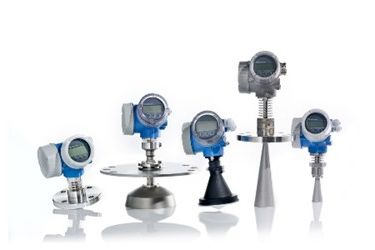
Scale actuators are sensors designed for continuous measurement of the level of liquids. Their work is based on certain physical principles, due to which the electronic unit of the level gauge converts the value of the liquid level into a proportional analog signal or into a digital code.
Signaling sensors are designed to determine the predetermined position of the level (filling / emptying) of a liquid in a container or pipe. Such sensors have a discrete (relay or transistor) output signal. As a rule, the signaling device is triggered when the sensing element is blocked or released by dip.
Fluid level detectors are separated into two kinds: contact (the entire sensor or part of it is in hookup with the hasteless middle) and non-contact (measurement occurs without contact with the liquid medium).
- The contact type of sensors is usually used in processes that have factors that impede the operation of the equipment.
- Non-contact dip layer transducers consumed where it is necessary to avoid the harmful effects of the physical and chemical properties of the measured liquid.
E&H Level Sensor Benefits
The main Benefits of Endress Hauser level switches are:
- high reliability;
- can be used to determine the water level fuels, chemical compounds, other liquids;
- long service life of the sensor;
- easy way to install and mount;
- long warranty period;
- the ability to install multiple sensors connected to one controller;
Areas of use
Liquid sensors have a large range of applications in industry and the national economy:
- in agriculture,
- food industry,
- the petrochemical industry,
- pharmaceutical
- in thermal power engineering, metallurgy, mining industry,
- in systems of production, storage of water, in systems of water supply, water disposal, sewerage of various enterprises
Types of Endress+Hauser Level Sensors
Endress Hauser produces a lot level transmitters and sensors. Here you will find description of most popular of them.
Float level switch
This is the simplest in design and very popular. Most often Liquifloat FTS20 is used in conjunction with an electrical relay, which is a float attached to the contact petal. The contact closes when the float changes its state.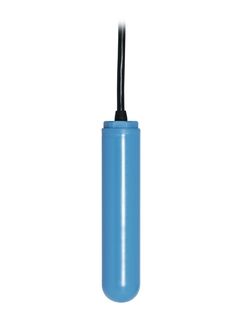
Float level sensors are one of the most inexpensive and at the same time reliable devices for monitoring the level of liquids. Float level switches can be used to control the level of a wide variety of media such as wastewater, chemically aggressive liquids or foodstuffs.
The design of the sensors is very simple: the sensor has a float with a magnet inside. When the level of the medium changes, the float moves, the magnet approaches the reed switch, which leads to a contact closure.
Among the advantages of Endress Hauser Float Sensors:
- no need for own food;
- low price;
- various design options and mounting methods;
- ease of installation;
- insensitivity to foam;
- work with aggressive, bubbly and viscous liquids.
Endress Hauser Capacitive Level Transmitter
Such EH level transmitter is made in the form of plates located on both sides of the tank. They determine the volume of the liquid when the container changes due to the distribution of a certain amount of material inside it.
Capacitive level sensors are used primarily as a means of monitoring the level of various liquids. The control process is based on the fact that any liquid has a certain dielectric constant.
The main element of a capacitive level sensor is a special highly sensitive capacitor that can change its capacitance depending on the environment in which it is placed. The sensitivity of the capacitor allows the sensor to work equally effectively with both dielectric liquids and liquids with a minimum dielectric constant.
The sensor is simply installed in a tank designed for liquid material, the level of which in this tank (for example, in a pipe) needs to be controlled. Here, the current dielectric constant of the air is taken as the basic permittivity. And as soon as the liquid comes into contact with the sensitive element of the sensor, the capacitance of the sensitive capacitor will change. At this moment, the sensor will work - the control liquid level will be recorded.
Endress Hauser capacitive level probes are able to respond to liquid also without direct contact of the sensing element with it. After all, fixing the change in the dielectric constant can also be carried out through the dielectric material of the tank body, inside which the liquid level varies. Control can be carried out, for example, through the lid, wall or bottom of the tank, as soon as the liquid reaches the point where the sensitive element of the sensor is installed.
The main series of simple and economical endress hauser capacitive level transmitters: Liquipoint, Liquicap, Minicap and Solicap
Endress Hauser Radar Level Sensor
Basically Radar sensors work as follows: the surface of the material receives the radiation from the sensor and reflects it. When the receiver catches this radiation, it compares it with the original signal and, using a frequency shift, detects the liquid level in the tank.
Micropilot level transmitters are widely used in various industries, such as petrochemical, pharmaceutical, food industries. They can work with any process medium, including aggressive and explosive ones, and pressure and temperature will not affect the readings. The radar level gauge equally well measures the level of both bulk materials (cement, crushed stone, flour, grain) and liquid products (gasoline, oil, aqueous solutions), ensures reliable operation in conditions of fast processes - loading, unloading, mixing, etc.
The advantages of using E&H radar level transmitter include:
- No moving parts
- No contact with liquid medium
- Ability to work with almost any medium under various conditions
- High accuracy
The principle of operation of all known radar level gauges is based on measuring the propagation time of a radio wave from the level gauge antenna to the surface of the product, the level of which is measured, and back. The device emits radio waves in a narrow range, the receiver catches the reflected signal and determines the capacity of the tank by its delay time.
At present, two technologies are mainly used in radar level control systems:
- with continuous frequency modulated radiation (FMCW - frequency modulated continuous wave);
- with pulsed signal emission.
The principle of operation of technology with continuous frequency-modulated radiation is based on the fact that the level transmitter emits a microwave signal, the frequency of which changes continuously in a linear fashion between two values of the emitted and received signals. The signal reflected from the surface of the controlled medium (liquid, bulk material) is received by the same antenna and processed. Its frequency is compared with the frequency of the signal emitted at a given time. The value of the frequency difference is directly proportional to the distance to the surface.
Pulse-type radars use a distance determination method based on the direct measurement of the time it takes for a high frequency (MW) signal to travel from the transmitter to the monitored surface and back. However, the time it takes for a signal to travel a distance of several meters is only a few nanoseconds. Therefore, to ensure the measurement of such small values with the required accuracy, the use of special signal processing methods is still required. For this, the conversion of the microwave signal into an intermediate frequency signal of the ultrasonic range is usually used. After such a conversion, the methods and algorithms used in ultrasonic level control devices can be easily applied to the signal processing of a radar level gauge.
There are following series of level radar endress hauser: Micropilot FMR, Micropilot FWR
Endress Hauser Ultrasonic Level Sensor
Prosonic sensors work in the same way as radar, but with one exception: the radiation comes from ultrasound. In the same way, the difference between the signal that is emitted and reflected is compared, which helps to determine the fluid grade.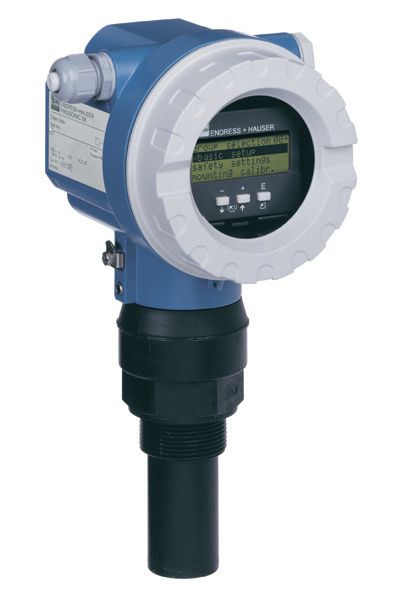
Endress and Hauser ultrasonic level transmitter is designed for continuous non-contact level measurement of liquids and bulk materials. The accuracy of the results is not affected by the density of the medium being measured, nor by its dielectric constant, nor by contamination. The principle of the ultrasonic measurement method, based on the determination of the signal transit time, is comparable to the operation of an echo sounder.
Ultrasonic level meters are great for abrasive, corrosive, chemical environments. The instruments are low maintenance and more economical than other non-contact level transmitters such as radar.
Please note that ultrasonic level transmitters E&H are not suitable for measurements in vacuum, as the signal cannot propagate in this medium. In addition, for the correct operation of this type of meters, normal atmospheric pressure and the absence of stationary obstacles from which the signal can be erroneously reflected (for example, the walls of narrow containers, due to the large conicity of the signal) are necessary. The measurement results of ultrasonic sensors can be affected by excessive product vapors, heavy dust and wind.
However, due to its undeniable advantages, such as the absence of physical contact with the measured medium, independence from product properties, compact size, ultrasonic level transmitters are widely used in various industrial areas: chemical and petrochemical industries, pharmaceuticals, agriculture, food industry. Ultrasonic level sensors are used to control mobile tanks, treatment plants and desalination plants.
The main series of endress hauser ultrasonic level sensors: Prosonic M FMU40, Prosonic FDU, Prosonic FMU90 and others.
E&H Hydrostatic Level Transmitter
Hydrostatical probes measure an indirect value, namely the pressure of the liquid column, which is proportional to the volume of liquid in the tank.
A hydrostatic level sensor is a submersible pressure sensor with a membrane whose inner surface communicates with the atmosphere through a tube located in the connecting cable, and the outer side is in contact with the measured medium. The sensor measures the static pressure of the liquid column above the transducer. This static pressure is the result of a mass of fluid on top of the transducer and is used to calculate the fluid level.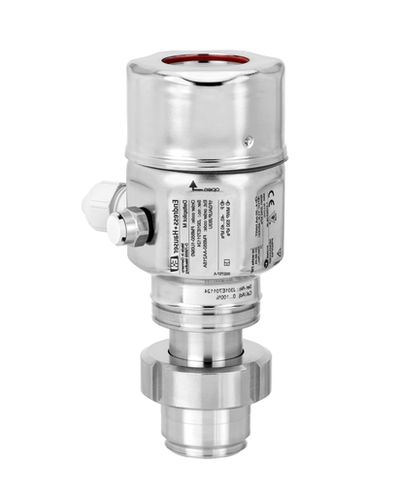
The ease of use of Waterpilot and Deltapilot pressure transmitters for hydrostatic level measurement provides a wide range of applications whenever level measurement is required - in an vented tank, tank, lake or river. In most cases, the hydrostatic level sensor is suspended by a cable at the required measurement level or simply immersed in the bottom of the tank. For a hydrostatic level sensor, it does not matter what configuration the reservoir, pool or natural landscape has, whether there are obstacles, thresholds or a complex profile.
Since this type is generally a gauge pressure sensor, it automatically compensates for changes in atmospheric pressure; thus the measured value corresponds only to the pressure of the liquid, proportional to the specific gravity of the liquid and the immersion depth. Therefore, a hydrostatic level sensor accurately measures the liquid level by calculating the distance from the measuring point to the surface in terms of the measured pressure.
The hydrostatic level sensor can be calibrated in meters of water against standard gravity or local gravity. For high-precision level measurements, the temperature of the measured medium must be taken into account in the calculation, since it affects the specific gravity.
The main areas of application for hydrostatic sensors are those associated with water treatment, wastewater treatment, as well as in the production and transportation of oils and fuels.
Families of E&H hydrostatic level sensors: FMX21 level transmitter, Deltapilot FMB, Waterpilot FMX and other.
There are other types of level sensors from Endress+Hauser such as:
- Micropulse Level Gauge. Designed to measure the level of liquid products. suitable for level measurement even under extreme operating conditions such as high temperature and high pressure. The sensor provides maximum reading stability even in the case of turbulent surfaces, foaming and the presence of additional equipment in the tank. The Levelflex FMP is used for continuous level measurement of liquids, pastes and slurries and as an interfacial level measuring instrument. The measurement process is not affected by changes in the medium, temperature, the presence of layers of gas or steam.
- Vibronic level sensor. The vibrating point level detection principle provides reliable protection against overfilling of liquids and overfilling of bulk solids for every industry. Additional protection guarantees a high degree of safety and availability of the sensors. Liquiphant ensures reliable sensor response regardless of fluid changes, turbulence, foam, vibrations or deposits.
- Servo level sensor. The principle of measuring the level of this type of senso
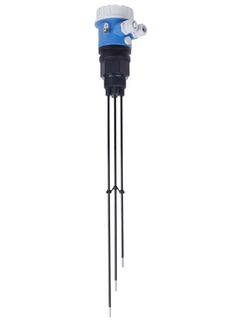 r is based on tracking the position of the load on the surface of the liquid, as a result of which the length of the cable on which the load is located changes. The measurement of the length of the unwound cable serves as a measure of the distance of the liquid from the location of the level gauge. Proservo and Silopilot are designed for level measurement in tanks and are used for high-precision measurements of level, interface and density of liquids.
r is based on tracking the position of the load on the surface of the liquid, as a result of which the length of the cable on which the load is located changes. The measurement of the length of the unwound cable serves as a measure of the distance of the liquid from the location of the level gauge. Proservo and Silopilot are designed for level measurement in tanks and are used for high-precision measurements of level, interface and density of liquids. - Conductive level transmitter Liquipoint. Suitable for a wide range of applications. No instrument calibration required and no moving parts in the tank - long life, reliable operation without mechanical wear or blockages.
- Radioisotope Level transmitter. its principle of operation is unchanged and is based on measuring the difference in the intensity of gamma rays, emitted and absorbed, when they pass through substances with different densities that fill the tank. Gammapilot FMG and Gamma Source FSG are widely used in metallurgy to measure the level of liquid metal. They are also used to determine the level of bulk solids and liquid media.
- Electromechanical level sensor. The Silopilot FMM is designed for industrial level measurement and uses the basic principle of sensing. Inexpensive sensors provide safe measurements in dusty environments.
- Paddle sensor Soliswitch. This type signals the filling, emptying and insufficient level of storage of bulk materials.
- Soliwave Microwave Barrier. Provides non-contact solid point detection using microwave barriers. These sensors provide point level detection and avoid jamming, as well as perform positioning and counting tasks. They provide non-contact measurement and therefore do not wear out. Typical measured products of this type of sensor include: lime, gravel, sawdust, paper and cardboard waste, sand.
All types of E&H level sensor and switches are of high quality and increased reliability.
Eltra Trade provides a complete range of all Endress+Hauser sensor models. Call now to get a quote!